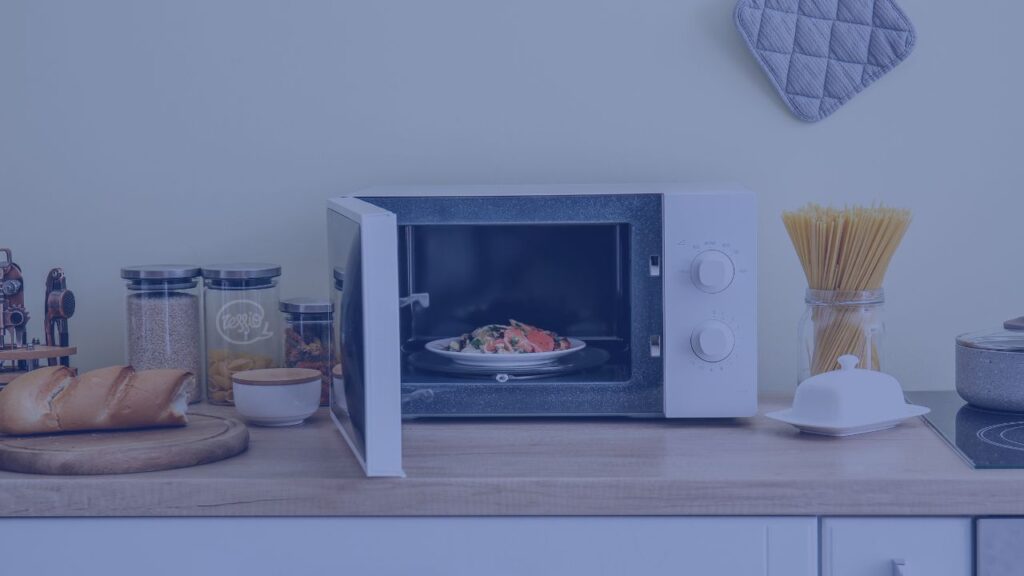No Metal in the Microwave: Lessons for the Inner Child and the Parent Within

No Metal in the Microwave: Lessons for the Inner Child and the Parent Within
We all know the rule: no metal in the microwave. It’s one of the first safety lessons many of us learn in a kitchen. Simple. Clear. Do it wrong, and there are sparks — a flash, a crackle, maybe even smoke.
I caught myself saying it the other day, half distracted, as my kid reached for a fork while I was reheating leftovers. “No metal in the microwave!” The words came out on autopilot, but they lingered in my mind. Maybe because so much of parenting — and being human — feels like that: a mix of warmth, rush, and the need to prevent small explosions.
It made me wonder if that familiar rule — the one taped to so many childhood kitchens — might hold a few lessons about how we manage emotional heat, too.
What “No Metal in the Microwave” Really Means
At its core, the rule isn’t about control. It’s about protection — of the environment, of the energy, of the system itself. When we put something reactive into a space that’s designed for gentle transformation, things can ignite instead of integrate.
Our emotional worlds are not so different.
The “microwave” could be any tender moment — a conversation with your child, a disagreement with your partner, or the quiet pause where your own younger self needs to be heard.
The “metal” is the sharpness we sometimes bring in without meaning to: sarcasm, defensiveness, fear, unhealed pain. These are conductive — they react quickly to heat, and they can set off sparks.
When we heat the moment without awareness, we can’t create nourishment — only reaction.
The Parent Within and the Child Within
When our kids push buttons (as all kids do), they often awaken the child parts inside us that also longed to be understood. In that moment, we can either:
react from that old spark, or
pause, and remember: “No metal in the microwave.”
That pause becomes an invitation. It says, let’s cool the metal before we heat the space.
It’s not about perfection — it’s about relational safety. We can still reheat leftovers (our patterns, our mistakes, our old stories), but they need the right container. They need grounding, empathy, curiosity.
A Collaborative Language Moment
In therapy — and in families — we use language as our shared heat source. How we speak, listen, and respond shapes the environment.
Here’s how this philosophy translates to collaborative language at home:
| Instead of… | Try saying… |
|---|---|
| “You’re overreacting.” | “Something about this feels big. Can we slow it down together?” |
| “Don’t talk to me like that.” | “I want to understand what’s underneath that tone.” |
| “Why can’t you just calm down?” | “It sounds like your system is heated. Let’s find a way to cool it together.” |
Each reframe removes the “metal” — the quick spark of shame, blame, or reactivity — and replaces it with curiosity and connection.
Lessons for the Fridge Door (or a Plaque)
No metal in the microwave.
Protect the environment where healing happens.Check your heat setting.
Are you warming, or burning out?Cool the metal before reheating.
Take a breath. Step back. Regulate before relating.Some leftovers are worth revisiting.
But only when they’re safe to reheat.Transformation happens in containment.
Create a safe space for healing and growth.
For the Inner Child and the Parent
When you remember “no metal in the microwave,” you’re not just protecting your kitchen — you’re modeling emotional safety. You’re showing your child (and your inner child) that energy can move without burning, that heat can be healing, and that connection doesn’t have to spark destruction.
It’s a quiet rule. But maybe it’s one worth framing — not as a warning, but as wisdom.
Closing Thought:
Maybe the next time you remind your child not to put a fork in the microwave, you’ll smile — because somewhere, deep down, your inner child is learning the same lesson: We can bring warmth, but not sparks.





